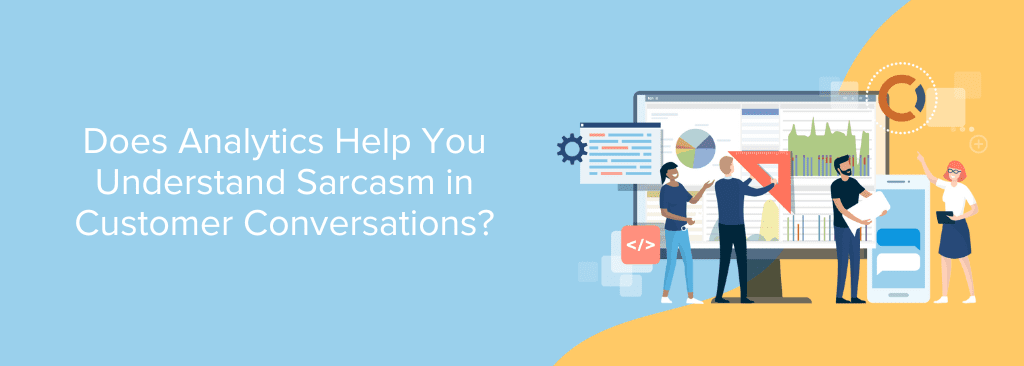Does Analytics Help You Understand Sarcasm in Customer Conversations?
There was this gentleman whose bag was misplaced by a domestic airline twice within 15 days. The second time around, he was frustrated and wrote them an email stating, “Thank you for misplacing my luggage for the second time in the past 15 days. I look forward to flying with you soon.”
Their automation engine reads this mail and responds, “Thank you for writing to us, and we are happy that you loved your experience. We want to continue providing that experience and look forward to your next flight with us.”
After all, their intelligence engine did not understand sarcasm.
Take these statements, for example.
- The dinner service was great!
- Great! I’ve waited an hour for a table, and it will still take a few minutes longer.
Long is the operative word in both statements, but the inference is different. The first statement is positive, while the sarcastic context in the second highlights a negative sentiment.
Are analytics tools evolving in a way that can understand sarcasm?
It begs the question, is it worth investing in a tool that can understand sarcasm?
I doubt it. Only less than 5% of customer feedback is laced with sarcasm. So, would it make sense for you to invest in machine learning algorithms and train your tools to understand them?
However, the common quip is that intelligence and analytics cannot understand sarcasm.
So, it cannot be ignored as well.
Understanding Sarcasm
Understanding sarcasm is a complex task, as it involves understanding the nuances of language and tone while including culture.
While analytics tools with natural language processing (NLP) and sentiment analysis can be employed, accurately identifying sarcasm remains challenging.
Here are some approaches to consider
Sentiment Analysis
Sentiment analysis tools analyze the overall sentiment expressed in a text or speech.
Sarcasm often involves expressing positive sentiments in a negative context or vice versa. Sentiment analysis may help identify such inconsistencies and raise flags for further examination.
Contextual Analysis
Analyzing the context of a conversation helps in understanding the intent behind statements.
Sarcasm heavily relies on context. By examining the preceding and subsequent statements, analytics tools can infer the likelihood of sarcasm. However, this method is context-sensitive and may not always be foolproof.
Pattern Recognition
Machine learning algorithms can be trained to recognize patterns associated with sarcastic expressions.
By exposing models to datasets containing examples of sarcasm, these algorithms can learn to identify linguistic cues, such as unexpected word combinations or incongruities, often present in sarcastic remarks.
Emotion Detection
Analyzing emotional cues in text or speech.
Sarcasm is sometimes conveyed through a mismatch between expressed emotion and the actual content — for example, positive words paired with a negative sentiment. Emotion detection tools can help identify such discrepancies.
User Profiling
Creating user profiles based on historical interactions.
If a particular user often uses sarcasm or has a unique linguistic style, analytics tools can consider this information when assessing the likelihood of sarcasm in future interactions.
Semantic Analysis
Examining the meaning of individual words and phrases.
Sarcasm often involves saying one thing while meaning another. Semantic analysis can help understand the intended meaning behind words, which is crucial for identifying sarcastic remarks.
It is important to note that while these approaches can contribute to sarcasm detection, achieving high accuracy remains challenging due to the subjective nature of sarcasm and the variability in individual communication styles.
Implementing a combination of these techniques and continually refining models based on real-world data can enhance the effectiveness of sarcasm detection in a contact center environment.
The big idea is to learn from the customer feedback and improve the customer experience. So, it helps to address even less than 5% sarcasm.
